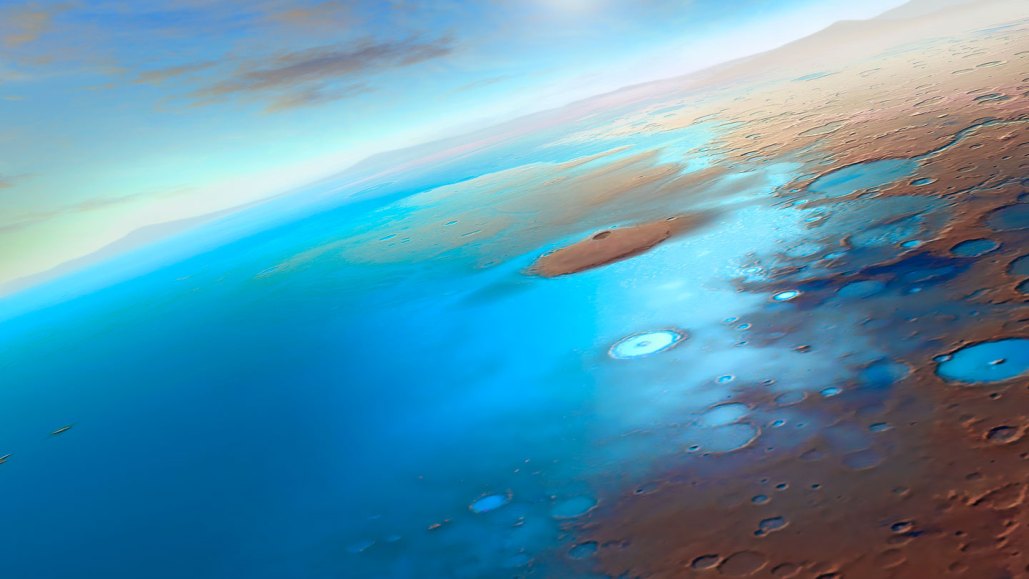"Abundant Initial Water Supply Crucial for Earth-like Planet Formation"

In planet formation, as in poker, you have to play the hand you’re dealt. If an Earthlike planet is the goal, the best starting hand might contain three to eight times all the water in Earth’s oceans.
“There’s kind of a sweet spot,” says Keavin Moore, a planetary scientist at McGill University in Montreal. Less water, and the planet dries out. More water, and it ends up soggy, Moore and colleagues report in a paper submitted June 28 to arXiv.org.
Science News has partnered with Trusting News to gather feedback on the potential use of AI in journalism. Currently, we do not publish any content produced by generative AI (see our policy). We do want to hear your views on how Science News could use AI responsibly. Let us know by participating in a short 10 question survey.
Astronomers think rocky planets orbiting small, dim stars could be the most common abode for life in the galaxy (SN: 6/14/17). But those stars have fiery tempers and could strip away a planet’s water with high-energy flares within a few billion years of the planet’s birth (SN: 6/7/24).
Moore and colleagues wondered what would happen if planets could hide the water destined to become oceans and atmospheres in their interiors until their host stars calmed down with age. The team made a simple simulation of a planetary life span, in which a planet is born hot and molten, with some water dissolved in a planet-wide sea of magma. It can start with water in its hand, or be dealt it later, with water delivered by comets or asteroids (SN: 11/16/22).
As the planet cools, water evaporates and forms an atmosphere. Some is lost to space. But some enters a cycle of dissolving into the planet’s mantle and escaping back out into the atmosphere. Storing water in the mantle protects it from the host star’s harsh rays.
For an Earth-mass planet in Moore’s simulation to end up with oceans and continents after about 5 billion years, it needed to start with three to eight times the amount of water in Earth’s oceans, he and his colleagues found. Planets that started out with up to 12 times Earth’s oceans could wind up as watery worlds, completely covered by ocean with no dry surface whatsoever. Such planets may actually exist, and could theoretically host life even without land (SN: 3/19/18).
Questions or comments on this article? E-mail us at [email protected] | Reprints FAQ
K. Moore et al. Water evolution & inventories of super-Earths orbiting late M-dwarfs. arXiv:2406.19923. Submitted June 28, 2024.
Lisa Grossman is the astronomy writer. She has a degree in astronomy from Cornell University and a graduate certificate in science writing from University of California, Santa Cruz. She lives near Boston.
We are at a critical time and supporting climate journalism is more important than ever. Science News and our parent organization, the Society for Science, need your help to strengthen environmental literacy and ensure that our response to climate change is informed by science.
Please subscribe to Science News and add $16 to expand science literacy and understanding.




